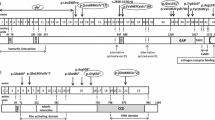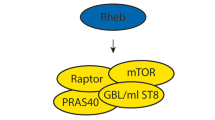Abstract.
Large TSC gene rearrangements are not rare findings in tuberous sclerosis. Interestingly, all deletions, duplications and inversions so far described involve TSC2, none being associated with TSC1. In order to shed light on the structural basis of the preferential DNA rearrangements in TSC2 over TSC1 and to assess, in an unselected patient population, the prevalence of large rearrangements in both TSC loci, we screened 202 tuberous sclerosis patients consecutively referred at our center. Southern blot analysis on EcoRI+HindIII double-digested DNA identified 19 partial or full-length gene deletions: three involved TSC1 and sixteen TSC2. The breakpoint sequence of seven internal deletions, three in TSC1 and four in TSC2, allowed us to speculate on the mechanism favoring TSC2 unequal recombinations and to identify a deletion hot spot that lies in TSC1 and that may be relevant in the routine genetic testing of tuberous sclerosis. Briefly, three major features appear to distinguish TSC1 from TSC2 deletions: (1) deletion size: all TSC1 deletions are within the transcriptional unit, whereas 12 of the 16 TSC2 deletions have at least one external breakpoint; (2) location within the gene: all TSC1 deletions are confined to the 3'end of the gene (all three 5' breakpoints being located in intron 20) thus resulting in the same frameshift mutation following amino acid K875, whereas the TSC2 internal breakpoints appear to be scattered along the gene; (3) preference for recombinatorial sequences: six out of eight internal TSC2 breakpoints map within Alu repeats, whereas none of the three TSC1 deletions appear to be Alu-mediated. Indeed, in the latter gene, unique structural features (a purine-rich tract flanked by pyrimidine-rich segments) surrounding one of the two identified breakpoint cluster regions might play a role in promoting inappropriate recombinations.
Similar content being viewed by others
Author information
Authors and Affiliations
Additional information
Electronic Publication
Rights and permissions
About this article
Cite this article
Longa, L., Saluto, A., Brusco, A. et al. TSC1 and TSC2 deletions differ in size, preference for recombinatorial sequences, and location within the gene. Hum Genet 108, 156–166 (2001). https://doi.org/10.1007/s004390100460
Received:
Accepted:
Issue Date:
DOI: https://doi.org/10.1007/s004390100460




